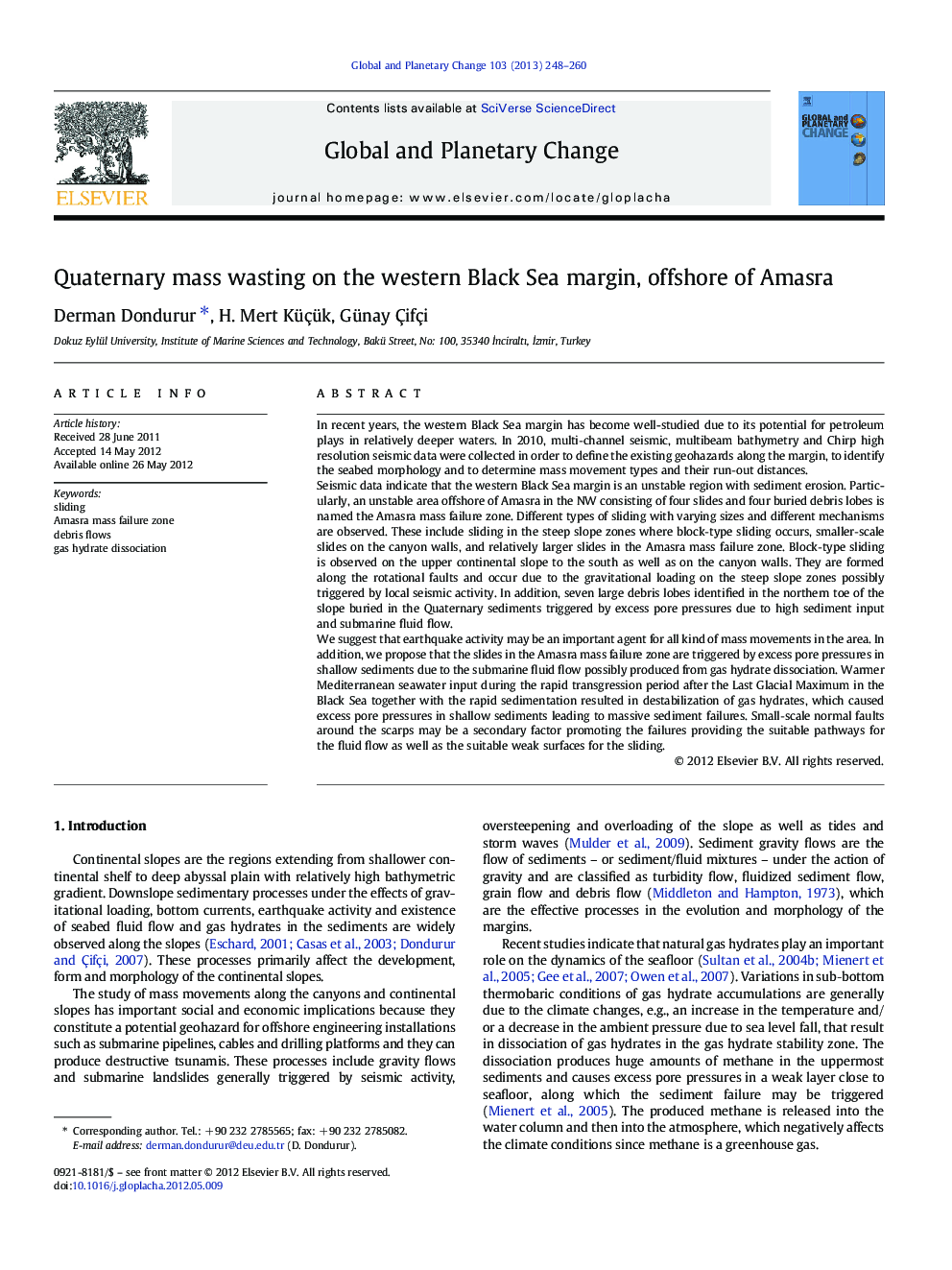| کد مقاله | کد نشریه | سال انتشار | مقاله انگلیسی | نسخه تمام متن |
|---|---|---|---|---|
| 4463572 | 1621678 | 2013 | 13 صفحه PDF | دانلود رایگان |

In recent years, the western Black Sea margin has become well-studied due to its potential for petroleum plays in relatively deeper waters. In 2010, multi‐channel seismic, multibeam bathymetry and Chirp high resolution seismic data were collected in order to define the existing geohazards along the margin, to identify the seabed morphology and to determine mass movement types and their run‐out distances.Seismic data indicate that the western Black Sea margin is an unstable region with sediment erosion. Particularly, an unstable area offshore of Amasra in the NW consisting of four slides and four buried debris lobes is named the Amasra mass failure zone. Different types of sliding with varying sizes and different mechanisms are observed. These include sliding in the steep slope zones where block‐type sliding occurs, smaller‐scale slides on the canyon walls, and relatively larger slides in the Amasra mass failure zone. Block‐type sliding is observed on the upper continental slope to the south as well as on the canyon walls. They are formed along the rotational faults and occur due to the gravitational loading on the steep slope zones possibly triggered by local seismic activity. In addition, seven large debris lobes identified in the northern toe of the slope buried in the Quaternary sediments triggered by excess pore pressures due to high sediment input and submarine fluid flow.We suggest that earthquake activity may be an important agent for all kind of mass movements in the area. In addition, we propose that the slides in the Amasra mass failure zone are triggered by excess pore pressures in shallow sediments due to the submarine fluid flow possibly produced from gas hydrate dissociation. Warmer Mediterranean seawater input during the rapid transgression period after the Last Glacial Maximum in the Black Sea together with the rapid sedimentation resulted in destabilization of gas hydrates, which caused excess pore pressures in shallow sediments leading to massive sediment failures. Small‐scale normal faults around the scarps may be a secondary factor promoting the failures providing the suitable pathways for the fluid flow as well as the suitable weak surfaces for the sliding.
► The western Black Sea Turkish margin is an unstable region of sediment erosion.
► Block‐type sliding in steep zones and much larger slides in the Amasra mass failure zone exist.
► Large buried debris lobes triggered by excess pore pressures in the Quaternary sediments are observed.
► Larger slides are triggered by submarine fluids produced from gas hydrate dissociation immediately below the slide headwalls.
Journal: Global and Planetary Change - Volume 103, April 2013, Pages 248–260